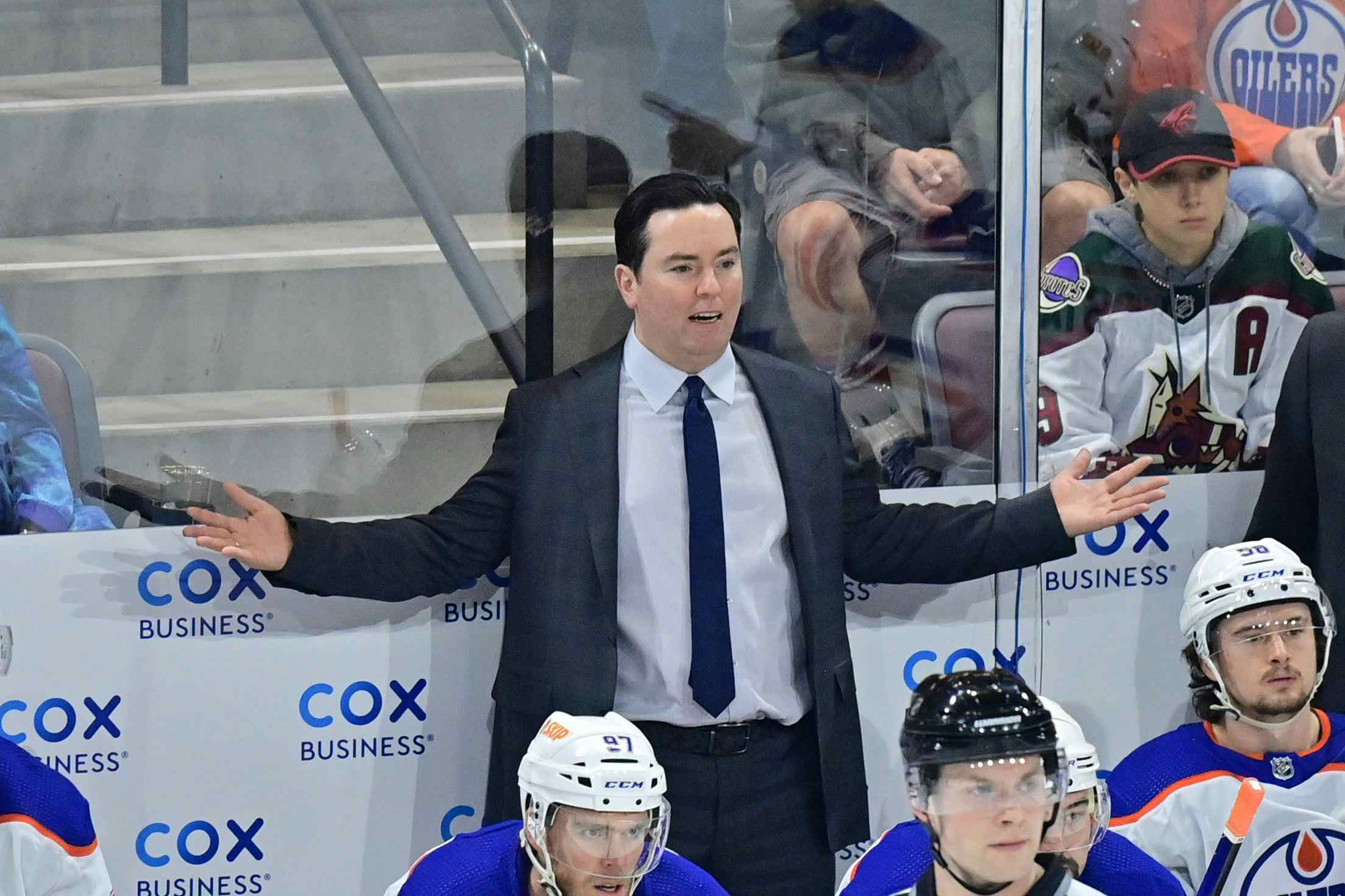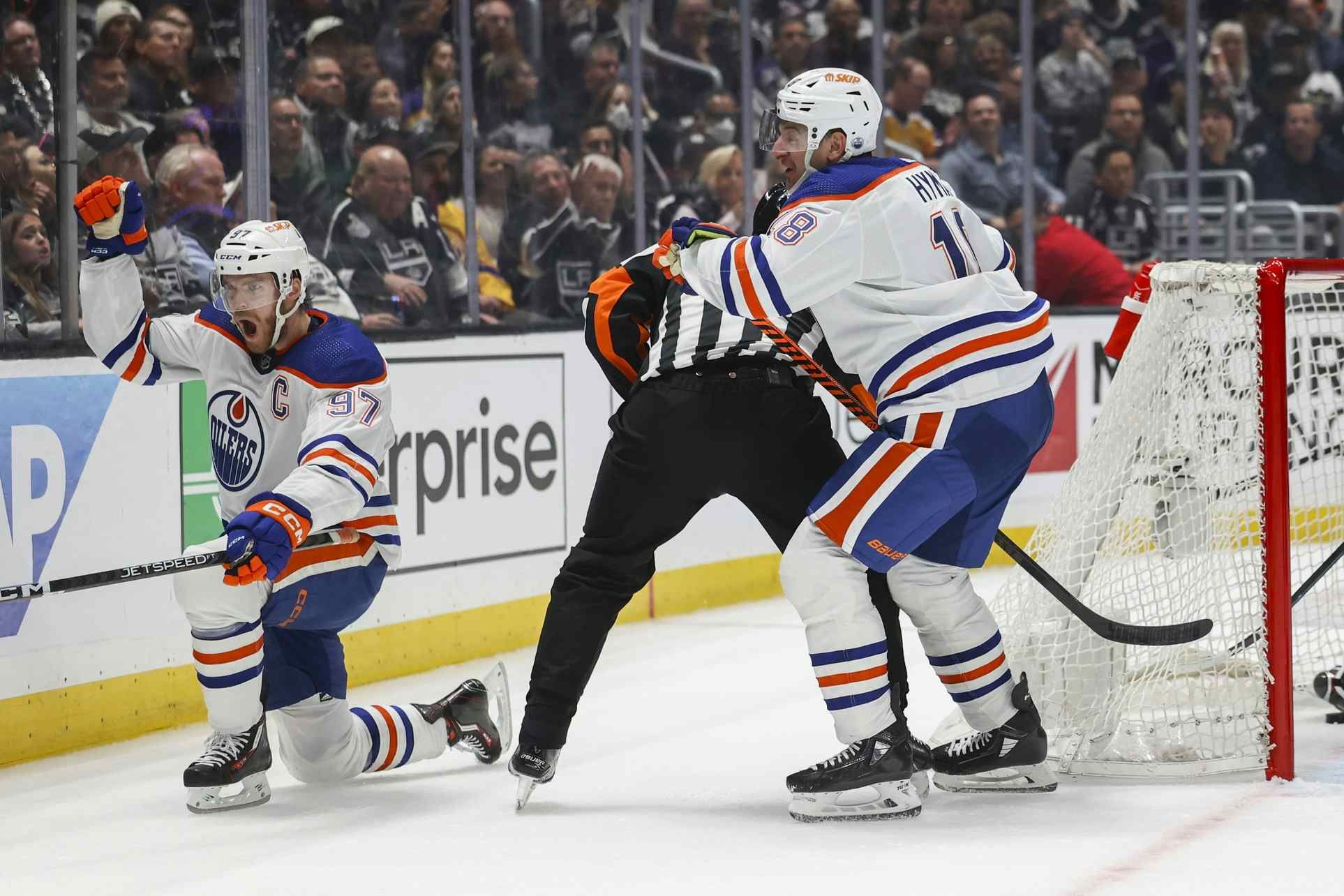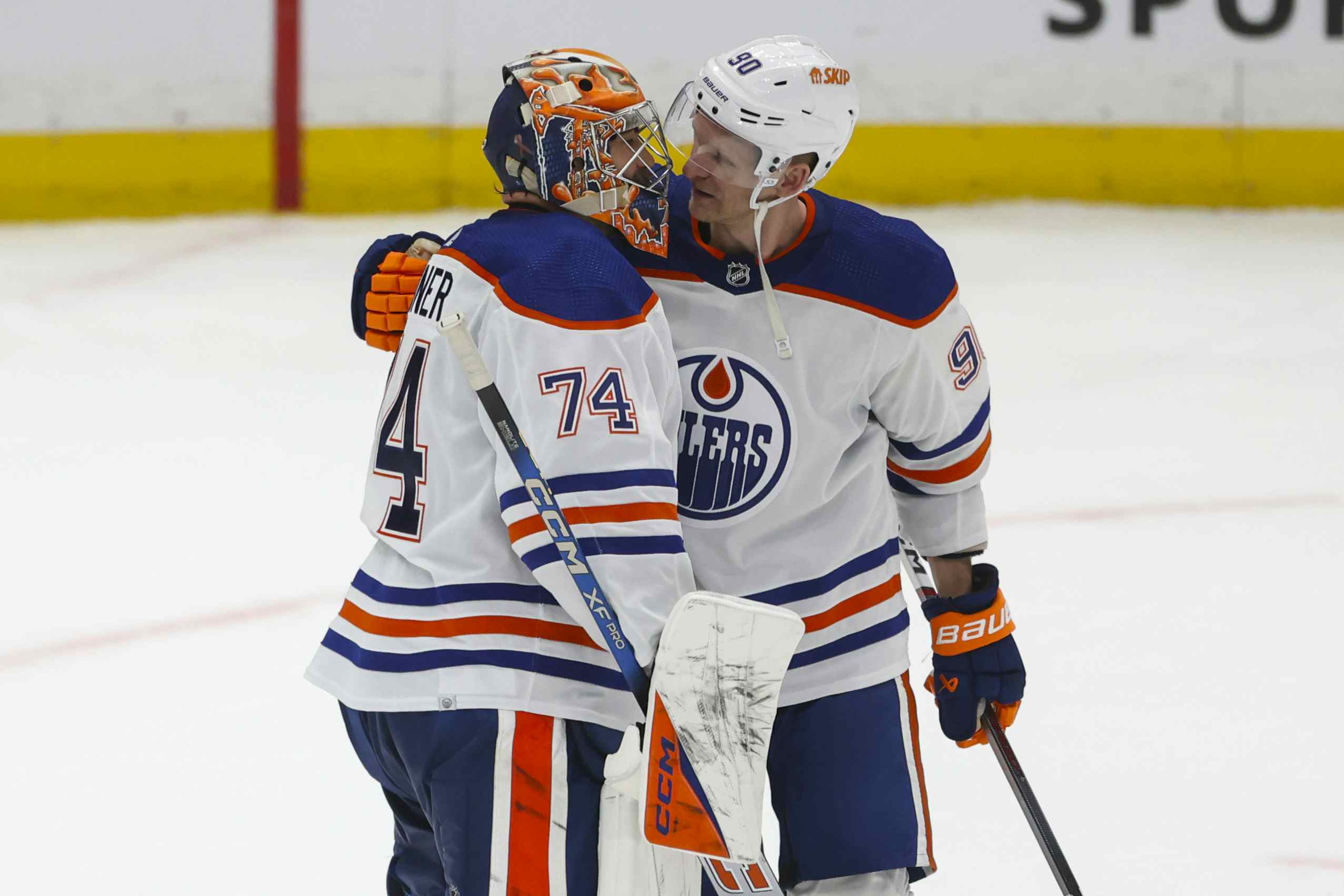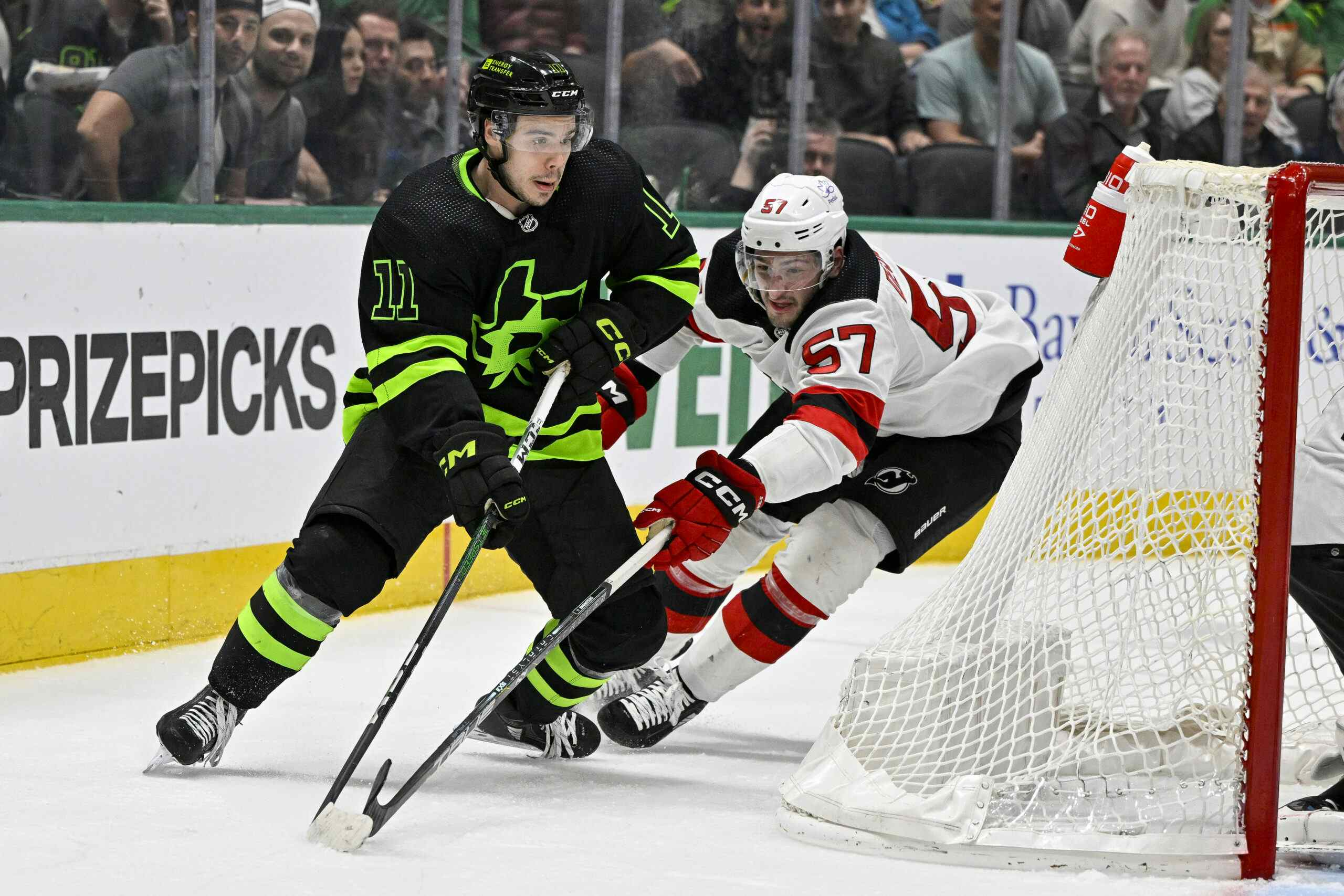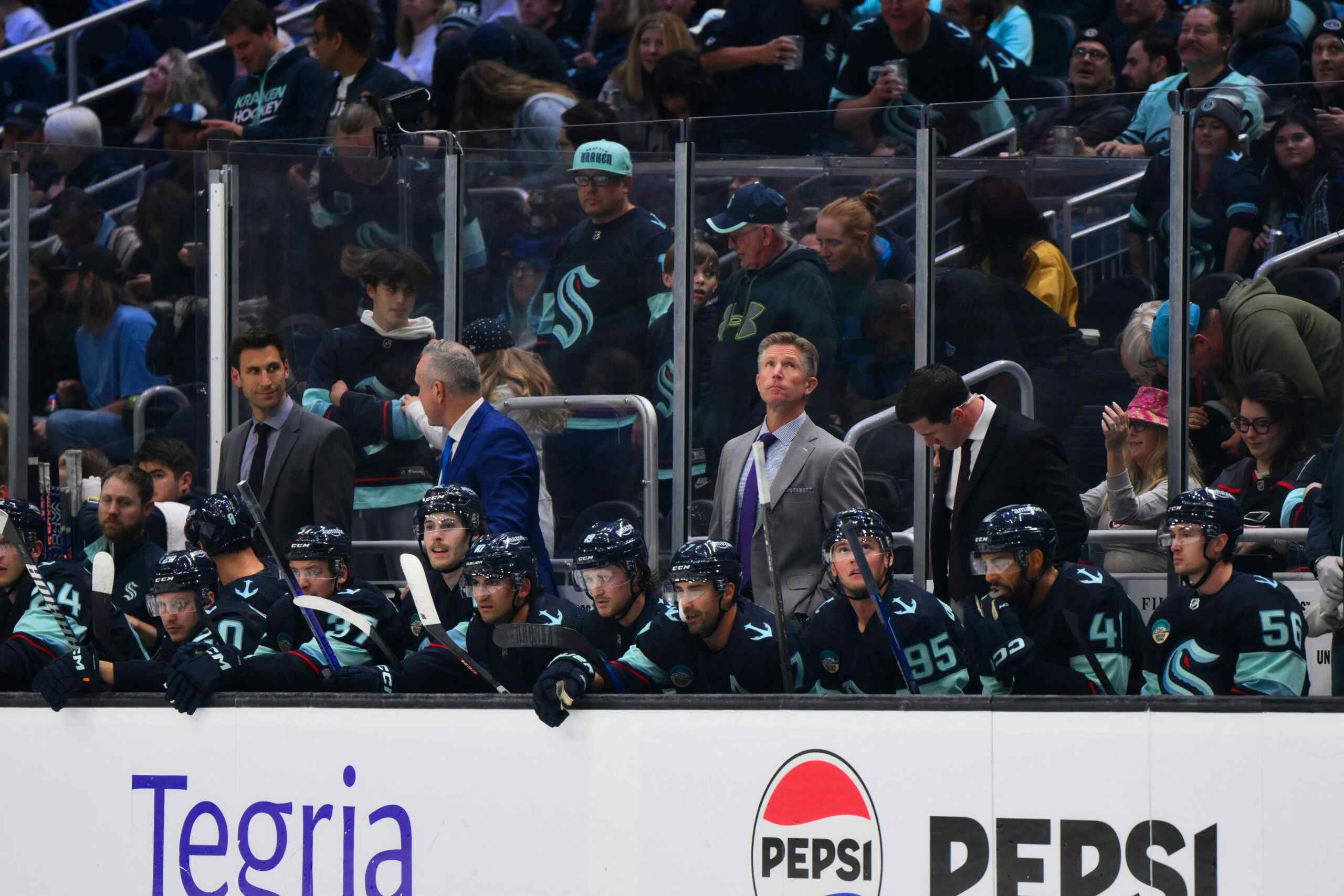Linus Omark: What it will take to make the Oilers?

As most every Oilers fan knows by now, Linus Omark has returned to the fold on a one-year, two-way contract that will pay him $600,000 in the majors. What will it take for him to earn those big league dollars?
The Competition

The Oilers have pretty reasonable depth on the wings, and so Omark is facing an uphill battle to land an NHL job. Guaranteed locks for the roster include Taylor Hall, Jordan Eberle, Nail Yakupov, David Perron, Ales Hemsky and Ryan Jones. That’s six of the eight-to-10 (depending on the exact roster configuration) jobs available.
Of the two-to-four spots left, three players have one-way contracts: Ryan Smyth, Jesse Joensuu and Mike Brown. Ben Eager also has a one-way contract, but given that he cleared waivers and was sent down to Oklahoma City last season he’s in a similar position to Omark and isn’t guaranteed an NHL job. Add in Mark Arcobello (who can play right wing and centre), AHL veteran Ryan Hamilton (who was coached by Dallas Eakins last season) and Omark and there are seven viable candidates for at most four jobs.
I’d likely rank their odds of breaking camp on wing with the Oilers this way:
- Jesse Joensuu
- Ryan Smyth
- Mike Brown
- Ben Eager
- Linus Omark
- Ryan Hamilton
- Mark Arcobello (who has a better chance at centre)
Other Factors

There are three other key factors that might increase or decrease Omark’s chances of making the team.
1. Injury. The big one here is Ryan Nugent-Hopkins. If he isn’t ready to go out of training camp and Taylor Hall slots in at centre, all of a sudden there’s space for another left wing – potentially even in the top-six. Any injury will help the wingers on the bubble, but the possibility of landing a skill job out of training camp is high on the list of things that could help Omark’s career (though naturally the Oilers are better off with Nugent-Hopkins in the top-six than Omark.
2. Defence. The Oilers have 10 defencemen with a strong case to make the team, and the assumption I’ve been making for most of the summer is that they’ll send Oscar Klefbom to the farm and waive or trade one of Corey Potter and Philip Larsen, leaving them with eight defencemen on the NHL roster. The team may well decide that its worthwhile to run with only seven defencemen – perhaps sending out both Potter and Larsen, possibly trading a guy like Nick Schultz – and if they make that decision life gets a little easier for the bubble forwards.
3. Centre. Last year the Oilers failed to address their injury issues at centre; consequently Ryan Smyth spent a big chunk of the year gamely trying to keep his head above water at the pivot position. Given that performance – and the fact that the group of candidates for the fourth line pivot job isn’t especially compelling – Edmonton might opt to keep five centres on the roster, with two of Anton Lander, Will Acton, Mark Arcobello and Andrew Miller making the opening night roster. It would add insurance against the kind of problems the team had last year, and allow the Oilers to alternate centres for different looks on their fourth line. Plus, with it being easier to move from centre to wing than the other way around, having at least one of the spare forwards play centre makes a certain amount of sense.
What Needs To Happen

That Omark is here in North America, rather than making more money back in Europe, makes his goal clear: he wants to be an NHL player. After the signing was announced, Omark talked in the Swedish press about making it difficult to send him to the minors; on Bob Stauffer’s show he also talked about working his backside off if he did find himself in Oklahoma City. Looking at the Oilers’ current roster, it’s hard not to think there’s a good chance Omark gets sent down out of camp (whether he clears waivers being another wrinkle) but there will be injuries over the course of the year (there always are) and if he’s the best forward on the Barons he’s going to get a shot at some point.
Recently around the Nation Network
At NHL Numbers, Travis Yost looks at how team performances changed over the course of last season, comparing their first-half Fenwick Close (a fancy term for shots and missed shots plus/minus with the score within one goal) to their second-half results. He talks about every team in the league – the Oilers results are interesting – but also points out that strong playoff performances by Detroit and San Jose were more predictable with this data:
So, by now I think it’s been exhausted how great the Detroit Red Wings were coming down the stretch. San Jose, to a lesser extent, too. Interesting thing about that San Jose/Vancouver first-round match-up I alluded to earlier: by a 48-game Fenwick Close sample, you were talking about two teams just 0.5% apart. But, by splitting the sample in half and focusing on the twenty-four most recent games, you had an San Jose team 3.0% better than Vancouver. There’s a lot of other reasons why the Canucks lost that series beyond a simple possession/scoring chance proxy, but boy, looking at it from this perspective should’ve raised a series of red flags.
Click the link above to read more, or check out some of my recent stuff:
Recent articles from Jonathan Willis

